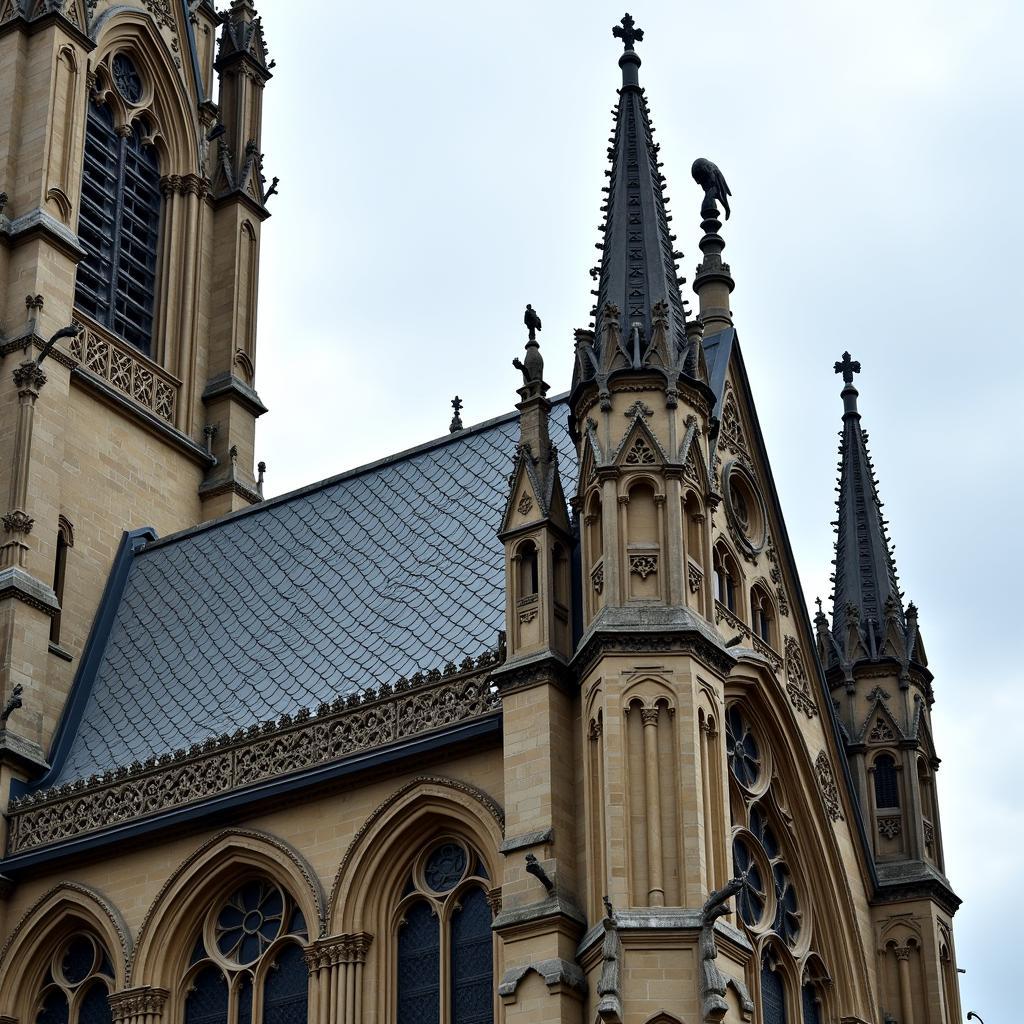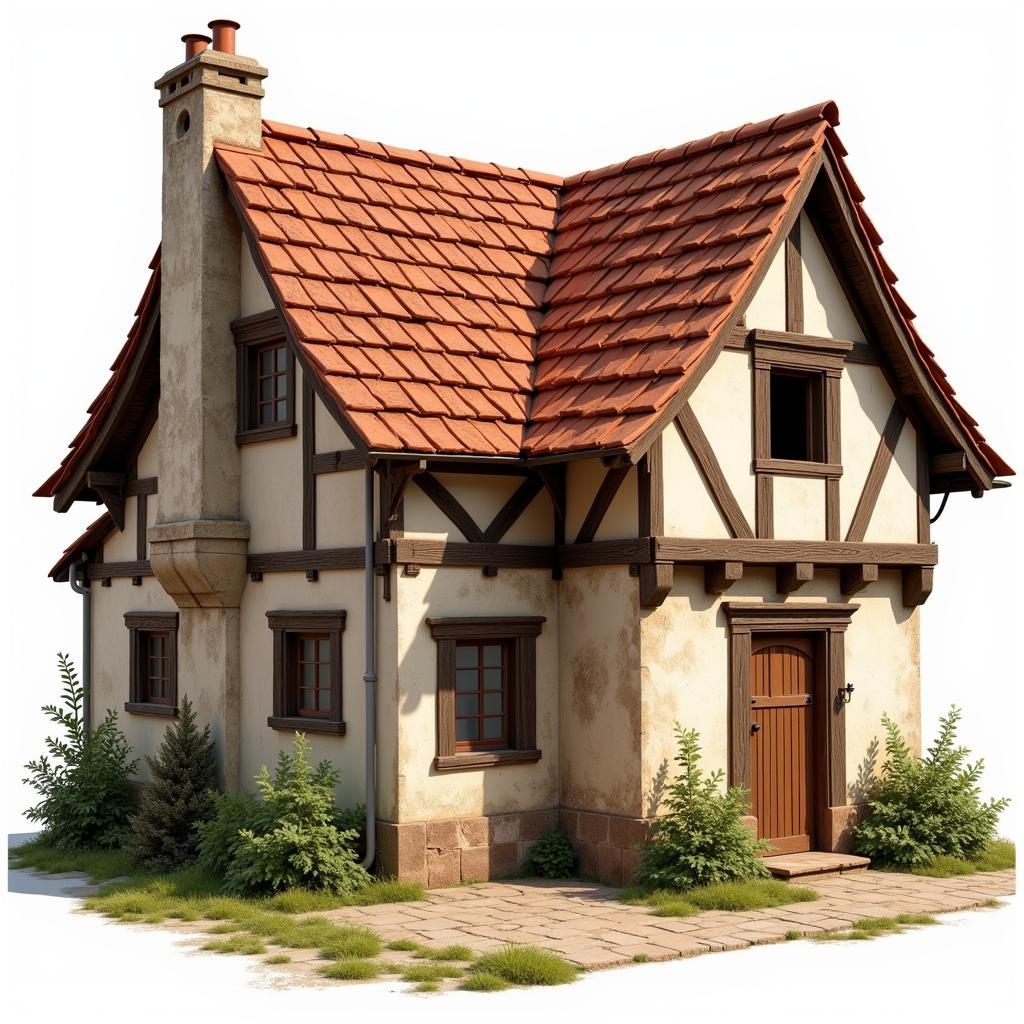Medieval Roofing, an often-overlooked aspect of medieval architecture, provides a fascinating glimpse into the building techniques and materials of the era. From humble dwellings to towering cathedrals, the roofs of medieval structures served as both practical necessities and artistic expressions. This article delves into the world of medieval roofing, exploring its evolution, common materials, and enduring legacy.
 Medieval Cathedral Roof
Medieval Cathedral Roof
The Evolution of Medieval Roofing
The styles and techniques of medieval roofing evolved significantly over the centuries, influenced by factors such as available resources, climate, and architectural trends.
Early Medieval Period (5th – 11th Centuries)
During this period, roofing materials were largely dictated by local availability. In wooded regions, timber framing and thatch were prevalent. Thatch, made from straw, reeds, or other dried vegetation, offered good insulation but posed a fire hazard.
Romanesque Period (11th – 12th Centuries)
The Romanesque period witnessed a shift towards more durable materials, particularly stone. This led to the development of heavier roofs supported by massive walls and rounded arches. While thatch remained common for less significant structures, wooden shingles and stone slates gained popularity.
Gothic Period (12th – 16th Centuries)
The Gothic period marked a revolution in roofing with the introduction of the pointed arch and flying buttresses. These architectural innovations allowed for taller, lighter structures with higher-pitched roofs. This, in turn, facilitated the use of larger, heavier stone tiles and slates, contributing to the grandeur of Gothic cathedrals.
 Medieval House with Tile Roof
Medieval House with Tile Roof
Materials of Medieval Roofing
A variety of materials were employed in medieval roofing, each with its own advantages and drawbacks.
-
Thatch: Widely available and affordable, thatch was a common roofing material for centuries. However, it required regular maintenance and posed a significant fire risk.
-
Wood: Wooden shingles and shakes, created by splitting logs, were another popular option. While less durable than stone, wood offered easier installation and better insulation.
-
Stone: Stone slates and tiles, typically made from slate, limestone, or clay, provided exceptional durability and fire resistance. However, their weight necessitated strong supporting structures.
-
Lead: Used primarily for prestigious buildings like churches and castles, lead roofing offered unmatched longevity and weather resistance. Its malleability allowed for intricate designs and ornamentation.
The Legacy of Medieval Roofing
Medieval roofing techniques and aesthetics have left an indelible mark on architecture. The soaring roofs of Gothic cathedrals remain iconic symbols of the era’s craftsmanship. Furthermore, many medieval roofing techniques, such as the use of stone slates and leadwork, continue to be employed in modern construction, albeit with modern materials and methods.
 Medieval Roof Construction
Medieval Roof Construction
Conclusion
Medieval roofing offers a captivating window into the ingenuity and artistry of medieval builders. From humble thatch to soaring stone vaults, the roofs of medieval structures reflect the technological advancements, cultural values, and architectural trends of their time. While evolving significantly throughout the medieval period, the legacy of medieval roofing endures, influencing architectural practices and captivating imaginations even today.